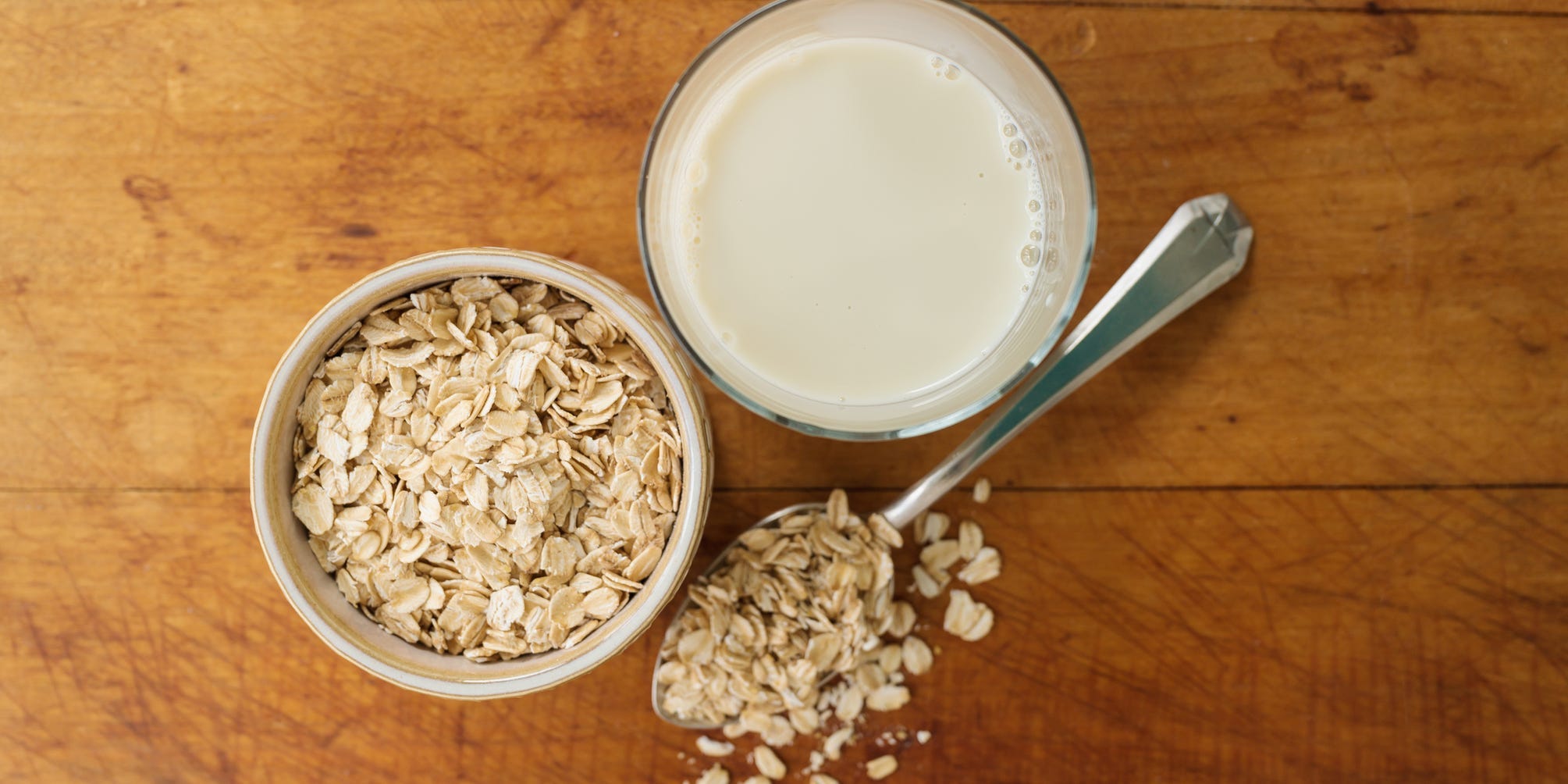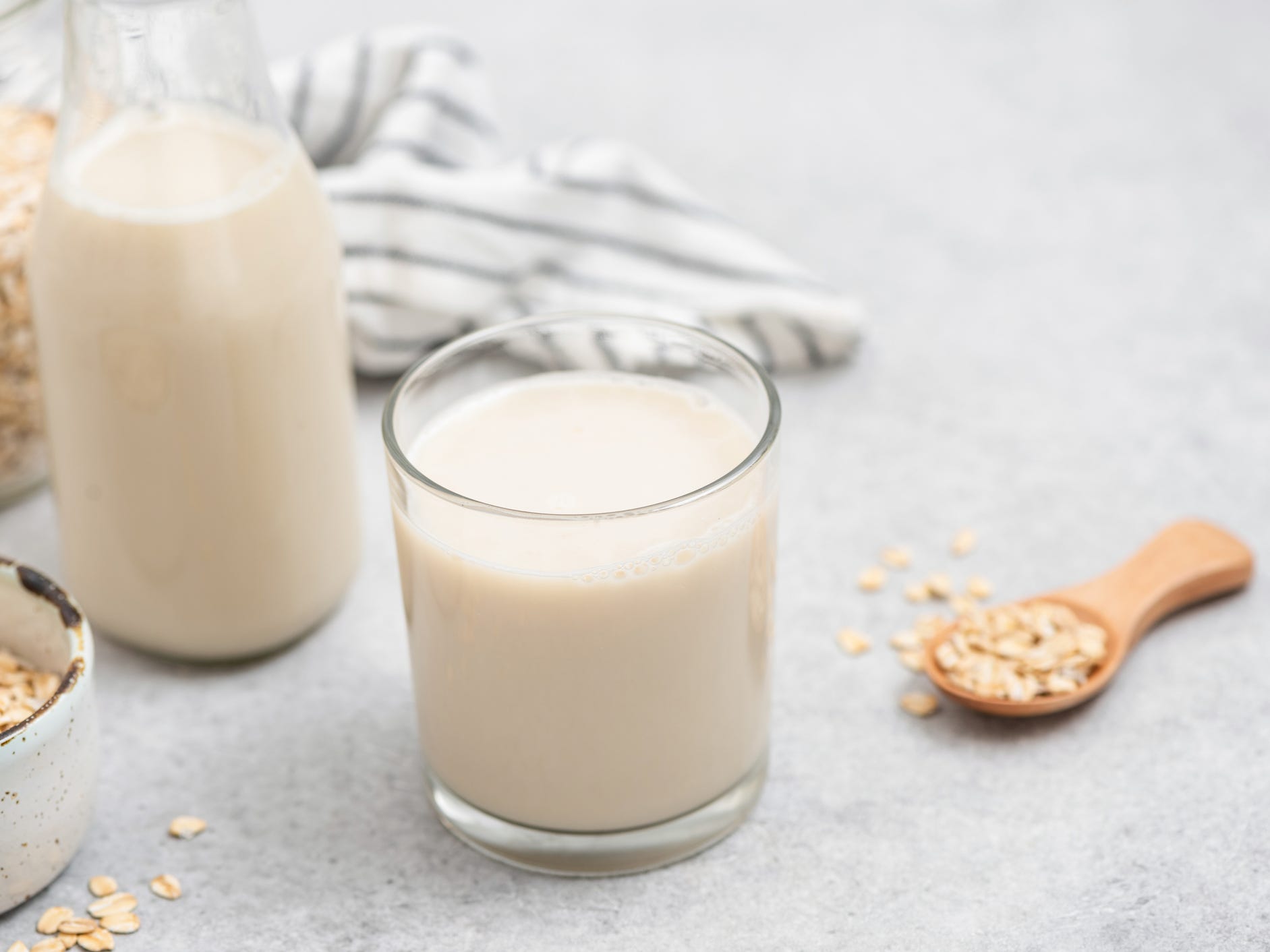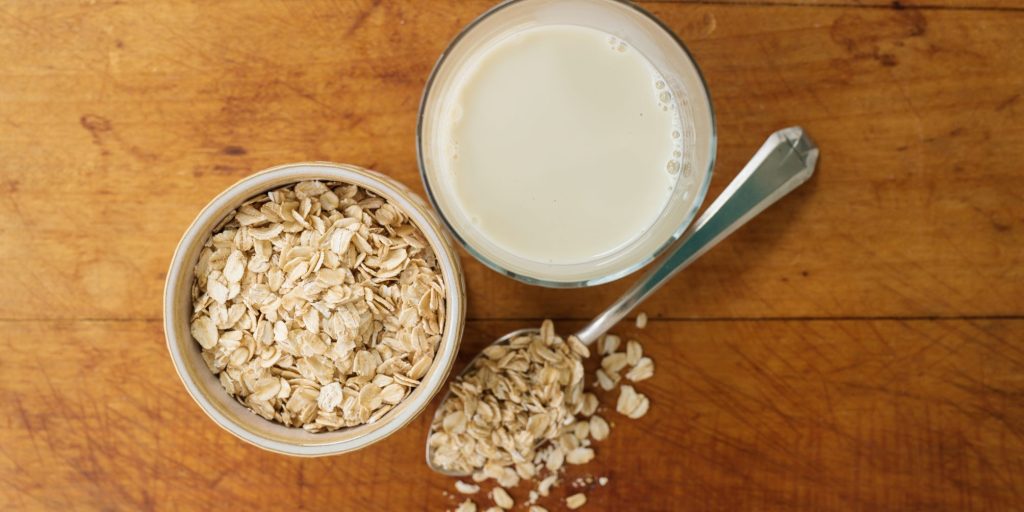
Jamie Grill/Getty Images
- Oat milk is the creamiest and most dairy-like plant-based milk alternative.
- Making oat milk at home requires oats, water, a blender, and cheesecloth or fine mesh strainer.
- Homemade oat milk has a short shelf life of just two days.
- Visit Insider's Home & Kitchen Reference library for more stories.
Oat milk is a plant-based milk alternative, and it can be substituted in anything you would typically use dairy for, such as smoothies, oatmeal, and coffee as well as in cooking and baking.
Although the straining process might be messy, making oat milk at home doesn't take long and only requires a few simple ingredients. Dr. Shashank Gaur, vice president of innovation at Elmhurst 1925, specializes in plant-based nutrition and shares his tips and steps for making oat milk at home.
Oat milk vs. dairy milk
Of all the plant milks on the market, oat milk is the closest in flavor and texture to traditional dairy. They both have creamy, neutral flavors that pair well with anything. In contrast, almond milk is usually thinner and doesn't froth well, while coconut milk has a strong coconut taste that can overpower other flavors.
Compared to nut milks and traditional dairy, oat milk is also more environmentally friendly because oats require less water to grow, and "milking" them produces far fewer greenhouse gasses. "Compared to traditional dairy, oat milk is a healthier option that won't upset your stomach," Gaur says. Plus, oat milk is a hypoallergenic option that's safe for people with nut allergies.
Getting the right consistency

Arx0nt/Getty Images
Sometimes the oat milk might begin to look chalky or slimy. This is because when oats heat up in the blender, their proteins and fibers lock together and become difficult to combine with water. "This results in a chalky, gritty texture and lots of separation," Gaur says. "The starches in oats can turn slimy when heated, so the texture becomes like a pudding." The more oats you use, the slimier and chalkier the oat milk might turn out. Avoid over-blending oats or using a blender that gets too hot - both contribute to an undesirable, slimy texture.
While you can thicken oat milk by adding some of the oat pulp back in, adding too much will make it slimy and there is not much that can be done to fix slimy or chalky oat milk.
Insider's takeaway
Oat milk possesses a subtle toasted flavor which you can balance with salt or even add a little sugar for sweeter milk. Oat milk is fairly straightforward to make at home, but straining the pulp can be messy and the strained out pulp contains the bulk of the oats' nutrition.
The trick to creamy oat milk that's not chalky or slimy is taking care not to over blend the oats and using a blender that won't get too hot. Heat compromises the natural qualities and texture of the oats. Homemade oat milk has a short shelf life, even when stored in a sealed container in the refrigerator, so make sure to consume it within two days of making.
